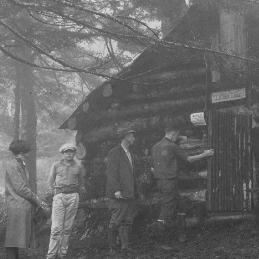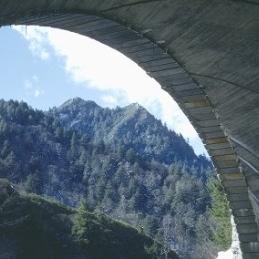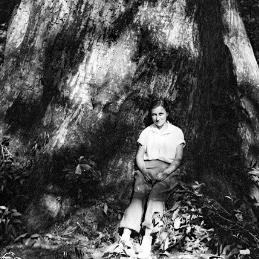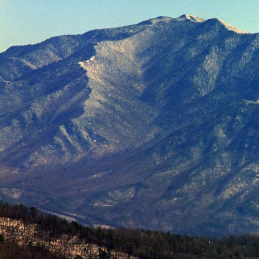Browse
Export 326 results:
Filters: First Letter Of Title is D [Clear All Filters]
Detection of Ecological Boundary Effects at the Borders of Great Smoky Mountains National Park In Conference on Science in the National Parks. WR 208 ed. Vol. 4. George Wright Society, 1986.
"Detection of Pseudogymnoascus Destructans on Free-Flying Male Bats Captured During Summer in the Southeastern USA." Journal of WIldlife Diseases 52, no. 4 (2016): 922-926.
Determinants of Quality Wildlife Viewing in Cades Cove, Great Smoky Mountains National Park In Forestry. Knoxville, TN: University of Tennessee , 1990.
"Determinants of Quality Wildlife Viewing in Great Smoky Mountains National Park." Wildlife Society Bulletin 21, no. 1 (1993): 21-30.
Determination and Compatibility of Putatively Hypovirulent and Virulent Isolates of Cryphonectria parasitica Collected from the Great Smoky Mountains National Park. Starkville, MS: Mississippi State University, 2008.
"Determination of Lead Levels Associated with Motor Vehicle Traffic within the Great Smoky Mountains National Park." In 4th Annual Science Research Meeting, 9-10. Department of the Interior, National Park Serice, 1978.
"Detrital Zircon Ages and Nd Isotopic Data from the Southern Appalachian Crystalline Core, Georgia, South Carolina, North Carolina, and Tennessee: New Provenance Constraints for Part of the Laurentian Margin." In Proterozic Tectonic Evolution of the Grenville Orogen in North America , 459-476. Vol. Memior 127. Boulder, CO: The Geological Society of America, Inc.,, 2004.
Developing a Guidance Program for Townsend High School. Knoxville, TN: University of Tennessee, 1964.
Developing a Natural Resource Inventory and Monitoring Program for Visitor Impacts on Recreation Sites: A Procedural Manual In Natural Resources Report. Denver, CO: National Park Service, 1991.
"Developing a Topographic Model to Predict the Northern Hardwood Forest Type within Carolina Northern Flying Squirrel (Glaucomys sabrinus coloratus) Recovery Areas of the Southern Appalachians." International Journal of Forestry Research 2014 (2014).
"Developing an Eastern Hemlock Chronology in Albright Grove, Great Smoky Mountains National Park." In Association of American Geographers Annual Meeting. Boston, MA: Association of American Geographers, 2008.
"Developing Critical Loads of Nitrate and Sulfate Deposition to Watersheds of the Great Smoky Mountains National Park, USA." Water, Air, & Soil Pollution 226, no. 8 (2015).
Developing Resource Overlays for Regional Recreation Planning: The Smokies Experience. Tennessee Valley Authority, Division of Forestry, Fisheries, and Wildlife Development, 1977.
Development along the Northwestern Boundary of the Great Smoky Mountains National Park: Can the Character of the Park "Soft-Edge" Boundary Be Preserved?. Knoxville, TN: University of Tennessee, 2001.
"Development Concept Plan and Environmental Assessment Newsletter." Great Smoky Mountains Institute Newsletter (2006).
Development Concept Plan Environmental Assessment, Deep Creek and Laurel Branch, Great Smoky Mountains. Denver, CO: Denver Service Center, 1984.
Development Concept Plan/Environmental Assessment Great Smoky Mountains Institute at Tremont. Gatlinburg, TN: Department of the Interior, National Park Service , 2010.
"Development of a Pollutant Monitoring System for Biosphere Reserves and Results of the Great Smoky Mountains Pilot Study." In 4th Joint Conference on Sensing of Environmental Pollutants, 451-456. New Orleans, LA : American Chemical Society, 1978.
Development of a Taxonomic/Ecological Database: Report of the Floristic Richness of Bryophytes, Great Smoky Mountains National Park In Great Smoky Mountains National Park, Final Report . Gatlinburg, Tennessee: National Park Service, 1991.
"The Development of Association and Climax Concepts: Their Use in Interpretation of the Deciduous Forest." American Journal of Botany 43, no. 10 (1956): 906-911.
"Development of Substance Use and Pychiatric Comorbidity in an Epidemiologic Study of White and American Indian Young Adolescents The Great Smoky Mountains Study." Drug and Alcohol Dependence 44, no. 2-3 (1997): 69-78.
"Development of the Deciduous Forests of Eastern North America." Ecological Monographs 17, no. 2 (1947): 211-219.
"Development of the Great Smoky Mountains National Park." Appalachia 21 (1936): 199-210.
The Development of the Iron Industry in East Tennessee. Knoxville, TN: University of Tennessee, 1958.
















































